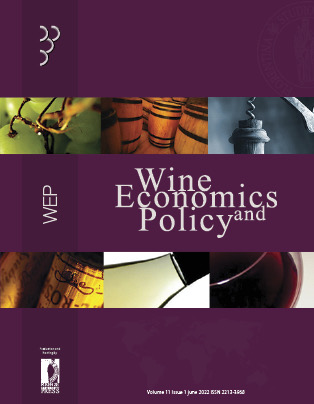What went right and what went wrong in my cellar door visit? A worldwide analysis of TripAdvisor’s reviews of Wineries & Vineyards
Published 2022-01-26
Keywords
- wine tourism,
- cellar door,
- service quality,
- service failure,
- TripAdvisor
- sentiment analysis,
- natural language processing ...More
How to Cite
Abstract
The purpose of this work is to study the issues of service quality and service failure during visits to cellar doors in the five regions where wine tourism is most developed: Hunter Valley (AU), Mendoza (AR), Napa Valley (the USA), Stellenbosch (ZA), and Tuscany (IT). We propose a methodology based on a combination of sentiment analysis and natural language processing applied to 89,672 TripAdvisor reviews. The results indicate that the issues most linked to service quality and service failure are as follows (in the order of importance): the quality of the main wine product, the experience in the tasting room, the organized tours, the empathy of the staff, the reliability of the staff, and the setting of the cellar and landscape. These themes are common to all five wine tourism regions, but each region treats them differently. The results obtained confirm and expand the results of previous studies and may prove useful both to professionals (wineries, tour operators, and travel agents) and for the design of a product that meets the needs of wine tourists. The main limitation of the study concerns the application of the methodology to the five most developed wine regions in the world; therefore, the results obtained may not be immediately applicable to the wine regions that are starting to develop wine tourism.

